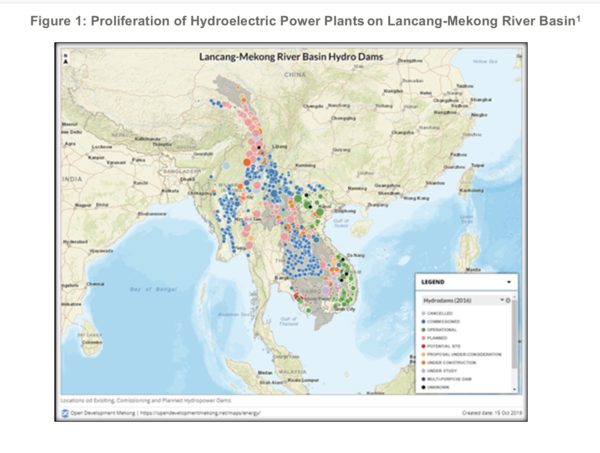 I have prepared a simple techno-economic feasibility study to answer this important question, and the findings indicate that, yes, it is possible. A 11,400 MW floating solar-with-storage (FSS) is technically feasible to generate an equal amount of power (15,000 GWh/year) and could likely be implemented at a lower $/kWh cost than the three hydropower projects – Pak Lay, Pak Beng and Luang Prabang – currently being planned in Laos. The scope is huge, but the FSS could be implemented over 15 years at 760 MW, 1,000 GWh/annually.
I have prepared a simple techno-economic feasibility study to answer this important question, and the findings indicate that, yes, it is possible. A 11,400 MW floating solar-with-storage (FSS) is technically feasible to generate an equal amount of power (15,000 GWh/year) and could likely be implemented at a lower $/kWh cost than the three hydropower projects – Pak Lay, Pak Beng and Luang Prabang – currently being planned in Laos. The scope is huge, but the FSS could be implemented over 15 years at 760 MW, 1,000 GWh/annually.
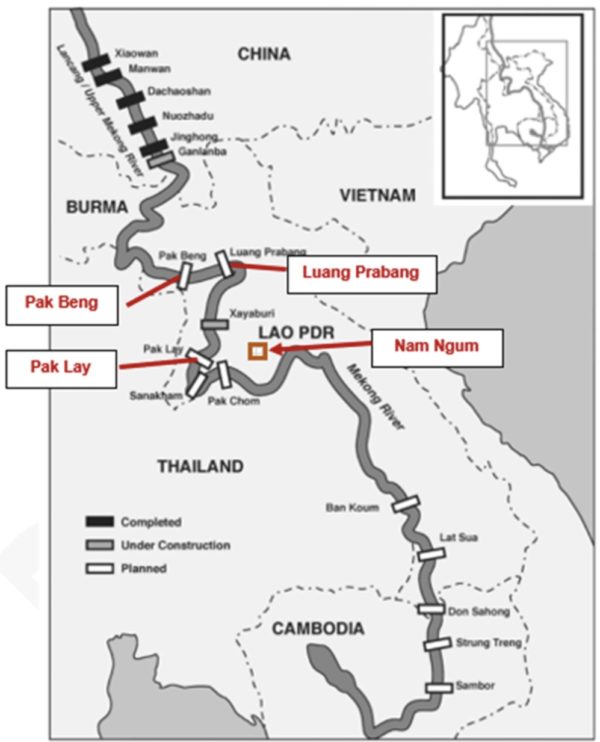
Overall, Laos plans to build nine hydroelectric projects on the main part of the Mekong River. The government has already deployed the Don Sahong and Xayaburi projects, and is now turning its attention to three further installations: Pak Lay, Pak Beng and Luang Prabang.
Table 1 shows that the three hydro projects have a total generation capacity of 15,418 GWh per year at an $8.8 billion price tag. To harvest that energy, 143 km2 of land will be lost to reservoir inundation, and 41,767 inhabitants will lose their homes.
 Environmental impact assessments have been studied by several international experts, ICEM[1], Intralawan[2], Vietnam DHI Study[3], MRC Council Study[4]. Their conclusions are that this series of HPP’s will result in an unequal distribution of benefits and costs among the countries, which is against the most important principle of the 1995 Mekong River Agreement[5].
Environmental impact assessments have been studied by several international experts, ICEM[1], Intralawan[2], Vietnam DHI Study[3], MRC Council Study[4]. Their conclusions are that this series of HPP’s will result in an unequal distribution of benefits and costs among the countries, which is against the most important principle of the 1995 Mekong River Agreement[5].
Methodology
Looking to offer Laos a true alternative to hydroelectric power, I have put forward the idea of a 11,400 MW floating solar-with-storage system (FSS) on the 370 km2 Nam Ngum reservoir – the biggest open and flat surface in Laos. The FSS could generate 15,000 GWh/year of energy, which is about equal to that of the above three hydroelectric projects. The study was carried out with the following analytical tools:
- Global Solar Atlas calculator[6] provided by World Bank Group/Solaris.
- Simple Levelized Cost of Energy (LCOE) Calculator provided by the National Renewable Energy Laboratory (NREL)[7].
- The FSS surface footprint is projected from Dami FSS in Vietnam after adjusted for respective Global Tilt Irradiance GTI[8].
- Cost estimates are based on US DOE[9] and recently completed FSS projects[10] of similar sizes and some already in operation in the Mekong region.
Mekong Hydroelectric Power
I have run the financial models to determine the generating costs of the next three hydroelectric projects: Pak Lay, Pak Beng and Luang Prabang. Table 2 below shows the LCOE based on the capital[11] and expense, excluding the external costs of the next three hydroelectric projects, to be $0.0257/kWh:

Table 3 shows the total Capex and external LCOE to be $0.0581/kWh (Note: the external cost is estimated by the Natural Heritage Institute report[12] for the deferred Sambor hydro project, assuming the three Laos projects will have same external costs if they go ahead).
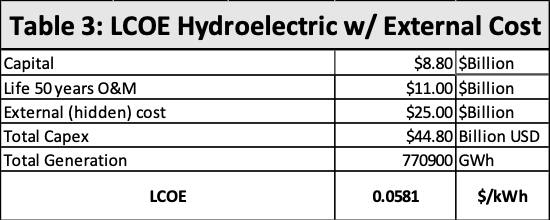
Nam Ngum Reservoir Floating Solar Power – Alternative
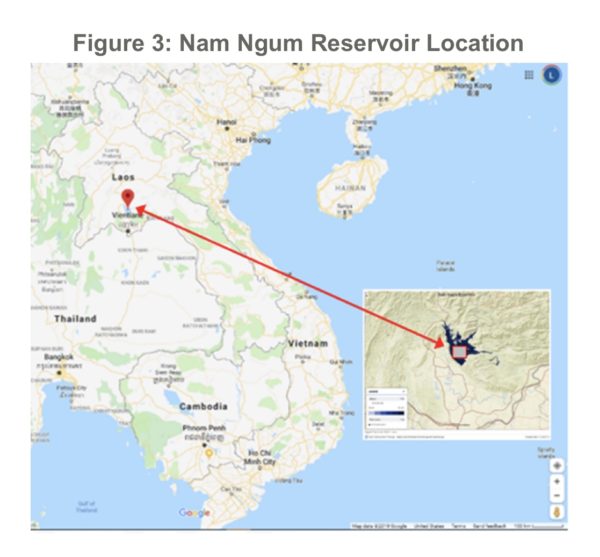
The Nam Ngum Reservoir lies 60 km North of Vientiane. There is an existing 500 kV transmission line to Vientiane and Thailand, and a future 500 kV line to Vietnam[13]. Nam Ngum is the most attractive location for floating solar systems, and for the purpose of this study, energy storage is included for dispatch ability.
Figure 4: Global Solar Atlas on-line shows the PVOUT (kWh energy can be generated per kWp panel capacity) for this location is 1,399 kWh/kWp. The Global Solar Atlas report generated in shown in Appendix 1 shows that a system of 760 MW solar panel capacity can generate 1,006 GWh/year.
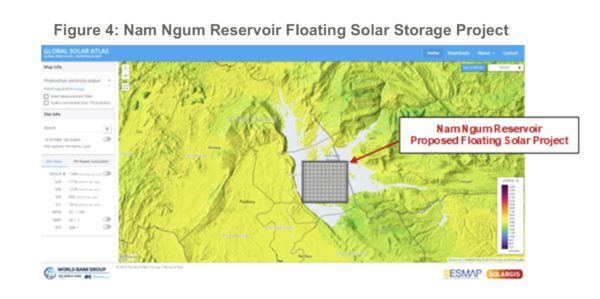
Table 4: The proposed FSS Project on Nam Ngum reservoir is to be implemented in 15 steps over 15 years, with a life span of 25 years. The entire project would cover 111 km2 or 30% the total surface area of the reservoir. This project will be ambitious, and several times bigger than the current biggest solar farm on earth.
Discussion
This study follows standard engineering methods and addresses all the key technical elements with site-specific data sources. The cost elements are estimates and subject to the market competitiveness, which can only be tested by procurement bidding. Surprisingly low bids for solar energy have been received by utilities not only in the United States, but also in Vietnam and Cambodia.
- The trio hydroelectric LCOE, internal cost only is $0.026 cents/kWh, however if external (hidden) cost is included its LCOE is $0.058/kWh (Tables 2 and 3).
- Nam Ngum FSS with 4-hours battery can generate equal GWh as the hydroelectric plan at an average LCOE of $0.058/kWh.
- Nam Ngum FSS with 2-hours battery can generate equal GWh as the hydroelectric plan at an average LCOE of $0.04/kWh.
- Both FSS options do not have external costs.
Both FSS options are superior to the trio hydroelectric projects and far better than Luang Prabang alone and the FSS options come with the following advantages:
- They preserve a very long stretch of Mekong river alone and save 143 km2 of riverbank land and homes of 41,767 inhabitants.
- Having 30% surface shaded by floating solar panels, Nam Ngum will have less evaporation loss, aquatic life suffers less algae bloom and will be free of its toxicity.
- There will be no trans-boundary impacts to neighboring countries and their people. That means concessional loans for the project can be negotiated at lower interest rate.
- The jobs generated from this 11,400 MW project would be more than 320,000 job-years[14].
Recommendations
Laos has built hydroelectric power plants at the most favorable sites, and exports energy to neighboring countries in the last two decades. The remaining sites are less productive, the cost to build them is rising and the adverse trans-boundary impacts of Don Sahong and Xayaburi felt by Cambodian and Vietnamese populations have been documented and heard around the world[15]. To continue on this course, Laos may find itself stranded in a world where hydropower is not clean and is increasingly costly. Thailand has delayed the purchase of Laos hydropower[16]. What is happening? The world has changed, advanced non-hydro renewable energy sources are better, cheaper, cleaner and by far climate friendlier to mankind.
Even oil exporting countries are making strategic changes. Saudi Arabia has built 2.6 GW solar farms at the two holiest meccas and plans to install 57 GW of solar by 2030. Coal exporting Australia plans to build the 15 GW Asia Renewable Energy Hub[17], with 3,800 km of undersea cable set to supply 3 GW to Indonesia and Singapore. The U.S. Government can’t stop utilities converting power plants to burn natural gas and phase out coal, as solar and wind energy prices fall below 2 cents/kWh[18]. China, while promoting hydro and coal power plants overseas, leads the world in solar panel production[19] and advanced battery[20] – a clear signal that it is moving away from fossil fuels. India is the most aggressive in adopting solar power, with plans to install 100 GW of solar by 2022.
Laotians should question their government's decision to adopt hydropower when the renewable energy revolution is already well underway around the world. The government should, in turn, should question consultant Poyres as to why it is not looking into non-hydro energy alternatives. Not just Laos can replace all three HPP’s with Nam Ngum FSS per this study. The author finds Cambodia could do without Sambor and Stung Treng with FSS on the Tonle Sap Lake and Vietnam could eliminate 20% of its coal power plants in the Mekong Delta, with FSS on a portion of the Tri An Reservoir alone.
The international NGO network Save-the-Mekong has issued a statement[21] to Laos to cancel all hydropower plants on the Mekong and replace them with non-hydro renewable energy options. This study hands the country's government the key to such a plan.
It is a great opportunity missed if Laos's government fails to consider the alternative of building an FSS on the Nam Ngum Reservoir. It is a grave act of error and omission if the consultant and author of the Socio-Economic Impact Assessment for the HPP fails to include FSS in their report.
This article was amended on 04/11/19 to amend the name of the National Heritage Institute to the, correct, Natural Heritage Institute.
References
[2] http://www.mrcmekong.org/assets/Uploads/Final-report-Mekong-Study-March-2017-8.pdf
[5] https://en.wikipedia.org/wiki/Mekong_River_Commission
[6] https://globalsolaratlas.info/
[7] https://www.nrel.gov/analysis/tech-lcoe.html
[9] https://www.energy.gov/eere/solar/articles/solar-plus-storage-101
[10] https://bigthink.com/technology-innovation/uae-solar-power?rebelltitem=1
[11] Capital cost is projected by FORECAST tool from cost data of Xayaburi, Pak Beng and Pak Lay by author.
[14] http://stalix.com/Solar%20Energy%20Job%20Creation.pdf
[15] https://www.internationalrivers.org/programs/southeast-asia
[19] https://news.energysage.com/best-solar-panel-manufacturers-usa/
[21] https://savethemekong.net/category/news/
About the author
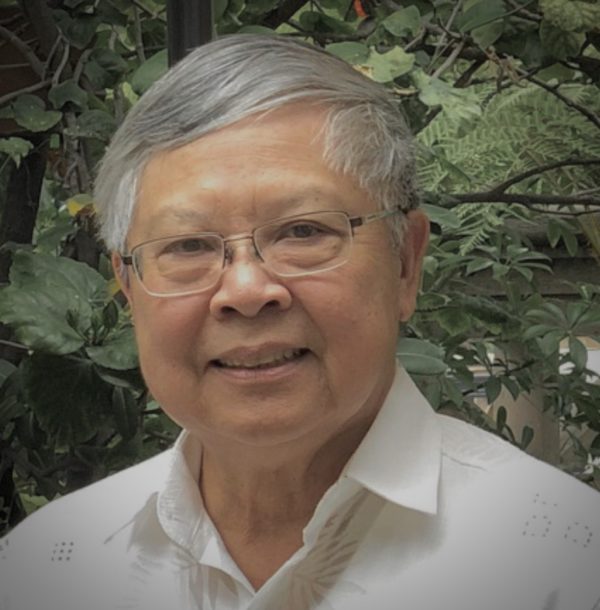 Long P. Pham has 40 years of experience as a professional mechanical engineer in California, and is the founder of the Viet Ecology Foundation, an NGO based in the U.S. Pham founded Moraes/Pham & Associates, Inc. and Advanced Technologies Consultant Inc. and serves as Principal-in-Charge, directing Facility, Safety and Code Compliance projects for advanced semiconductor and pharmaceutical companies, such as Hughes Aircraft Co, Genentech, ASML Cymer, AMCC, ABOTT, Solar Turbines.
Long P. Pham has 40 years of experience as a professional mechanical engineer in California, and is the founder of the Viet Ecology Foundation, an NGO based in the U.S. Pham founded Moraes/Pham & Associates, Inc. and Advanced Technologies Consultant Inc. and serves as Principal-in-Charge, directing Facility, Safety and Code Compliance projects for advanced semiconductor and pharmaceutical companies, such as Hughes Aircraft Co, Genentech, ASML Cymer, AMCC, ABOTT, Solar Turbines.
The views and opinions expressed in this article are the author’s own, and do not necessarily reflect those held by pv magazine.
This content is protected by copyright and may not be reused. If you want to cooperate with us and would like to reuse some of our content, please contact: editors@pv-magazine.com.
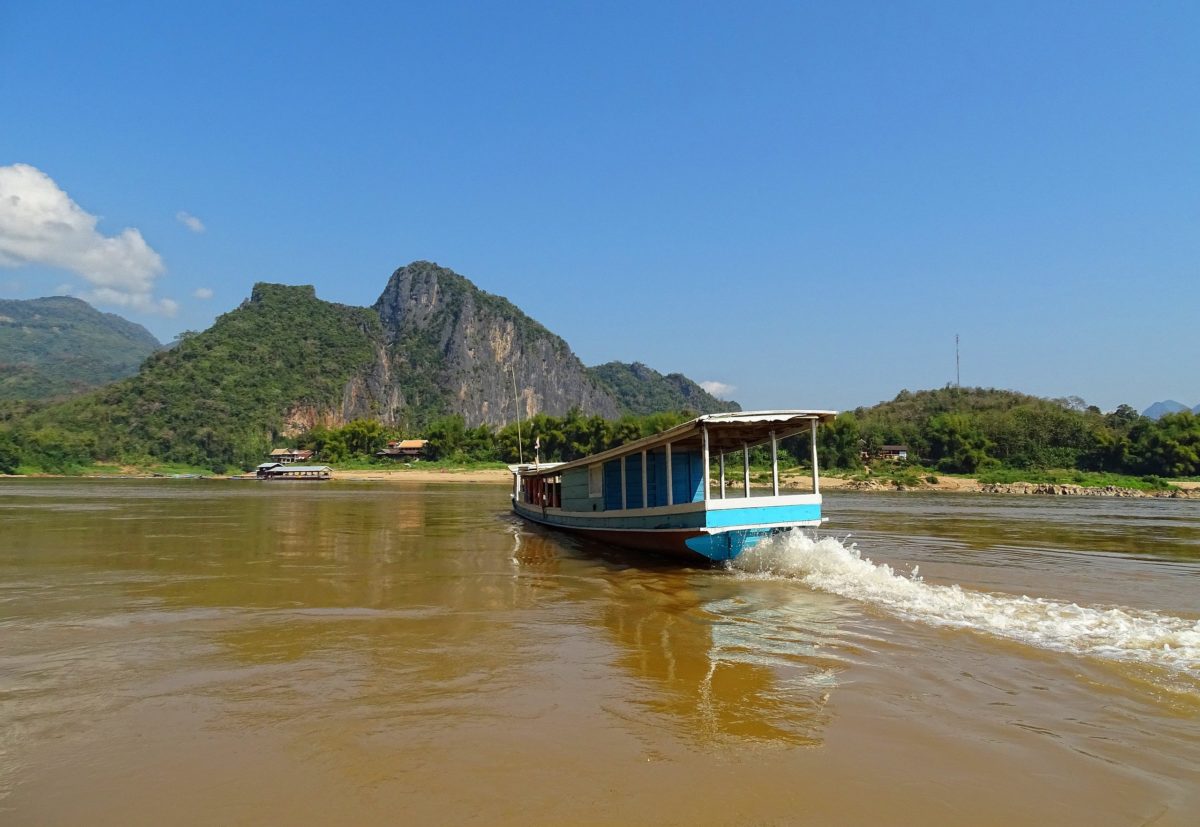
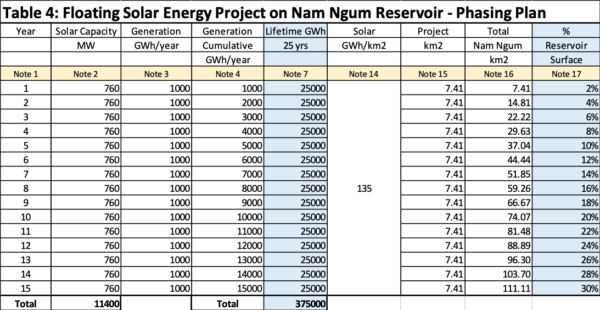
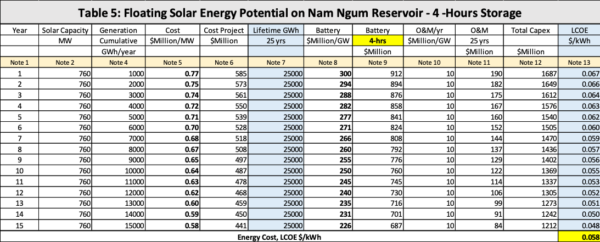
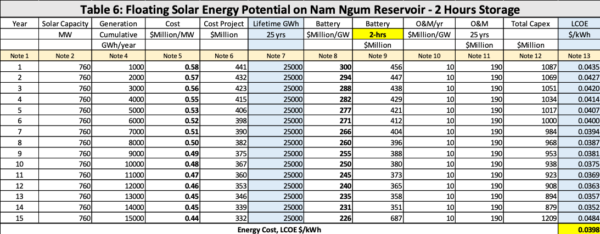


2 comments
By submitting this form you agree to pv magazine using your data for the purposes of publishing your comment.
Your personal data will only be disclosed or otherwise transmitted to third parties for the purposes of spam filtering or if this is necessary for technical maintenance of the website. Any other transfer to third parties will not take place unless this is justified on the basis of applicable data protection regulations or if pv magazine is legally obliged to do so.
You may revoke this consent at any time with effect for the future, in which case your personal data will be deleted immediately. Otherwise, your data will be deleted if pv magazine has processed your request or the purpose of data storage is fulfilled.
Further information on data privacy can be found in our Data Protection Policy.